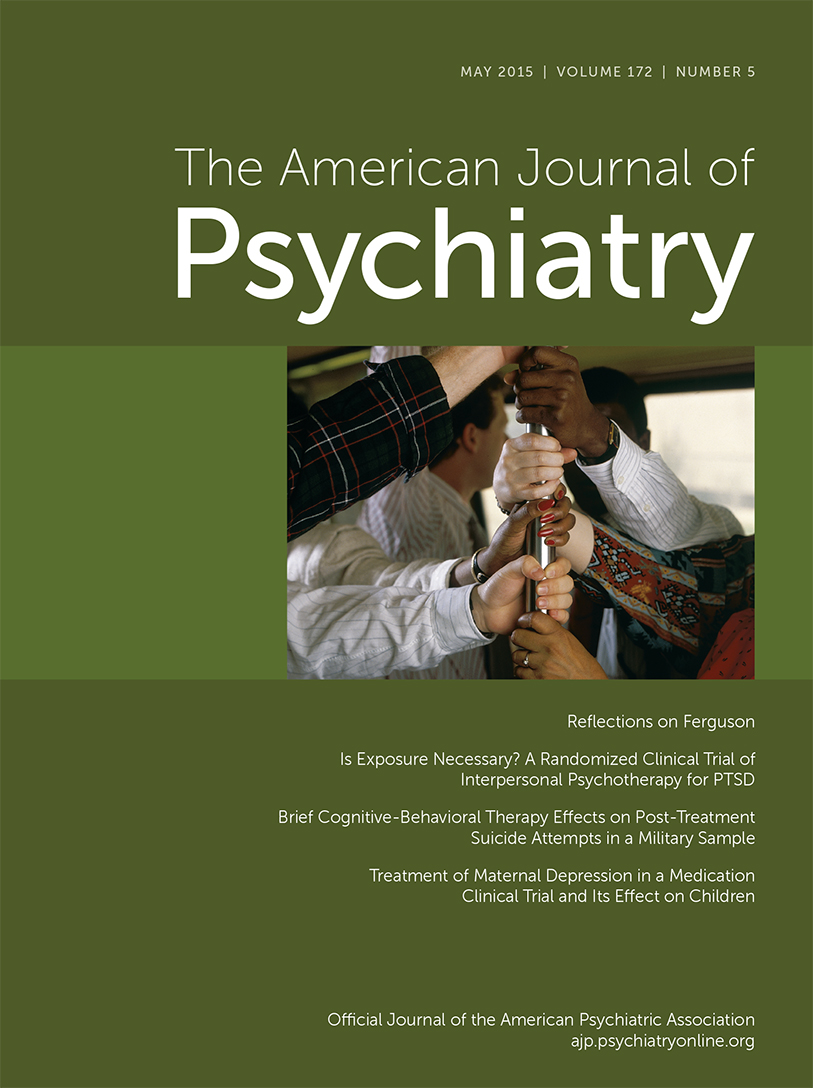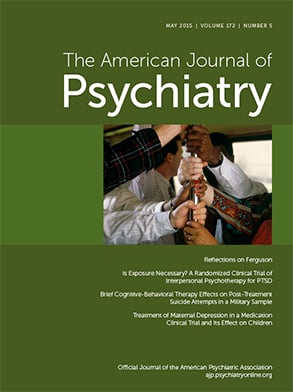Cognitive-behavioral therapies (CBTs) emphasizing exposure have been the most widely studied and empirically validated psychotherapeutic treatments for posttraumatic stress disorder (PTSD). Prolonged exposure, which was recently endorsed by the Institute of Medicine as the only PTSD therapy for which there is adequate evidence of effectiveness, has a hypothesized mechanism of action consistent with the animal models of fear activation and extinction that form the basis for understanding PTSD from a neurobiological perspective. At the same time, it is known that interpersonal traumas are the most frequently occurring and potent precipitants of PTSD, that the avoidant and numbing symptoms of PTSD adversely affect one’s current relationships, and that social support reduces the risk of chronic PTSD after trauma. These facts suggest that for patients entering PTSD treatment, their current interpersonal relations are problematic and that improving them could improve symptoms and overall functioning.
Against this backdrop, Markowitz and colleagues (
1) tested the efficacy of interpersonal psychotherapy (IPT)—an evidence-based, present-oriented psychotherapy with established efficacy for depression—for patients with PTSD. Based on Bowlby’s attachment theories (
2), IPT initially focuses on helping patients understand their emotional responses as they arise in the context of their current relationships (“affective attunement”) and uses this understanding, along with behavioral methods such as problem solving and role playing, to improve and strengthen interpersonal relationships (
3,
4). Current interpersonal problems are broadly defined as grief, disputes, life transitions, and interpersonal deficits. By clarifying and resolving these problems in the here and now, symptoms may begin to improve, even if the origin of the symptoms lies in experiences in the past. The high rate of comorbid depression in patients with PTSD provided an added rationale for exploring the efficacy of this treatment in PTSD.
The three-arm randomized controlled trial compared IPT to both prolonged exposure, the gold standard for PTSD, and relaxation therapy, an active psychotherapy control that has known, but limited, anxiolytic effects. The authors hypothesized that both IPT and prolonged exposure would be superior to relaxation therapy and, more importantly, that IPT would be no more than “minimally inferior” to prolonged exposure. This last and most crucial hypothesis was meant to demonstrate that IPT could serve as a viable alternative to prolonged exposure for PTSD patients who prefer an interpersonal approach.
The study recruited 110 seriously ill patients with PTSD, 90% of whom had some kind of interpersonal trauma and many of whom had a history of multiple traumas (including childhood trauma in 36%). Over half had chronic PTSD, 50% had comorbid major depression, 50% had a comorbid axis II diagnosis, and most had limited social support (84% were single, and less than 50% were employed) and a history of unsuccessful community psychotherapy (75%) and pharmacotherapy (50%). Use of medication was not allowed, which may limit the generalizability of the study but may also have provided a more stringent test of the efficacy of the therapies. Therapies were delivered by experts over 14 weeks and were balanced for total therapy time and for therapist age and gender. Assessments used state-of-the-art instruments at baseline and at 7 and 14 weeks.
The outcomes of the trial are potentially practice changing. Both IPT and prolonged exposure showed superiority to relaxation therapy on multiple PTSD, depression, and functional status outcome measures, and IPT was no more than minimally inferior to prolonged exposure, with a difference of 5.5 points on the Clinician-Administered PTSD Scale (CAPS), much smaller than the accepted 15-point CAPS difference required to demonstrate superiority between treatments. Only prolonged exposure was superior to relaxation therapy on the CAPS, with IPT showing an advantage that fell short of statistical significance (p<0.10), while only IPT was superior to relaxation therapy in meeting the criterion for response (a 30% reduction in PTSD symptoms) (response rates, 63% compared with 38%; prolonged exposure fell in between, with a response rate of 47%). Remission rates were relatively low and were similar in all three groups (26%, 23%, 22%). Both IPT and prolonged exposure were superior to relaxation therapy on the Posttraumatic Stress Scale–Self-Report, the Hamilton Depression Rating Scale, measures of quality of life and social functioning, and the Inventory of Interpersonal Problems. The analysis indicated that the effects of prolonged exposure relative to IPT were greater at 7 weeks than at 14 weeks—that is, prolonged exposure appeared to be superior to IPT early on, but IPT then caught up by week 14, perhaps reflecting that it takes longer for social functioning than symptoms to improve. Only for prolonged exposure and relaxation therapy were therapeutic effects significantly related to the extent that subjects exposed themselves to reminders of the trauma, suggesting a different mechanism of action for IPT.
Comorbid major depression appeared to be a moderator of attrition, with depressed PTSD patients more likely than nondepressed patients to drop out of prolonged exposure (50% compared with 5%) than IPT (20% compared with 10%) (p<0.10). This suggests that IPT may be more acceptable to depressed patients, who may lack the tenacity required to endure anxiety-provoking exposures—and by improving adherence, IPT could be more effective for this subgroup. At the same time, the authors acknowledge that the high attrition rate in depressed patients in the prolonged exposure group might have been lower if antidepressant medication had been prescribed. In sum, it appears that focusing on improving current relationship problems is as effective a treatment for PTSD as exposing the individual to trauma memories. Hence, focusing on the apparent “cause” of the PTSD is not necessary to improve current PTSD symptoms and functioning.
As the authors note in their discussion, the results of this trial add a new, non-CBT treatment to the PTSD treatment armamentarium, showing that there is not “one royal road to PTSD response.” While improvement in PTSD symptoms was unrelated to exposure to trauma reminders, the first author has noted elsewhere (
5) that PTSD patients treated with IPT seem to expose themselves to trauma reminders later on, perhaps aided by enhanced social support, and that this may improve outcomes further. Parenthetically, patients in the prolonged exposure group showed comparable improvement to those in the group IPT on the one available measure of interpersonal relationships (the Inventory of Interpersonal Problems), suggesting that symptom-focused exposure treatment can also improve interpersonal relationships, perhaps by reducing avoidance, or maybe even by accessing and helping patients master emotions.
This study reminds us that there may be multiple therapeutic routes to achieve the same beneficial outcome, consistent with our field now having a vast array of evidence-based treatments that seem to “work” for a variety of mood and anxiety disorders. A distinct advantage of IPT is that it focuses on and addresses an individual’s emotional and interpersonal life, something that many patients may want and request when they seek psychotherapy. This therapeutic preference is currently addressed by psychodynamic psychotherapy, still the predominant mode of psychotherapy practiced by U.S. psychiatrists, despite the advances in CBT. IPT has even been viewed by some as a type of “psychodynamic” psychotherapy (
6), despite a lack of focus on early life experiences and transference (although therapist awareness of both can be effectively utilized to promote improved interpersonal relationships). While IPT’s developers were careful to distinguish it from analytically oriented therapies (
2), it obviously shares some important elements with them, such as focus on affect, personal relationships, and attachment.
Some clinicians may also wonder how IPT differs from a standard “supportive” psychotherapy. After all, supportive psychotherapy is said to focus on problematic relationships and maladaptive patterns of behavior and emotional responses (
7), and it aims to improve self-esteem and enhance adaptive functioning through problem solving (
8). The fact that so many of the patients in the Markowitz et al. study had a history of unsuccessful community psychotherapy treatment, which would likely have been of the supportive type, may be instructive in drawing a distinction between IPT and supportive psychotherapy. Because our field has increasingly found multiple effective paths for treatment (e.g., medications, CBT, insight-oriented therapy, behavioral activation, problem solving, mindfulness), this has perhaps led to too much eclecticism, trying to do too many things at once, and a lack of focus in treatment. In practice, this lack of focus may especially occur in supportive psychotherapy, where therapists may use several approaches simultaneously, possibly preventing any of them from being effective. What may set IPT apart from supportive psychotherapy is its singular and consistent focus on interpersonal themes. It is possible that the resemblance of IPT to both psychodynamic and supportive psychotherapies explains why IPT, despite decades of research, has not been widely implemented in mainstream U.S. psychiatry.
IPT is being increasingly implemented in developing nations and is producing excellent outcomes in patients with depression (
9,
10)—somewhat of a paradox given the more anemic uptake of IPT in the developing world (
11). Unlike CBT, which has different manuals for different disorders (recent efforts to develop transdiagnostic CBT notwithstanding), IPT has more of a built-in “transdiagnostic” (“one size fits all”) focus—all individuals who are distressed with mood and anxiety symptoms struggle with their emotions and relationships, and IPT techniques may not have to vary too much despite variation in symptoms. Implementation studies in developing nations, utilizing individuals with limited training, suggest that IPT could be a useful complement to simple CBT techniques currently being taught to care managers in both specialty and primary care systems using collaborative-care models. This kind of implementation may, in the end, be the way that IPT can most affect the mental health field and patients.

